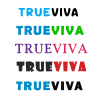How to Create Engaging Content That Attracts Clients
In freelancing, your content is your brand voice. Whether you are writing blogs, creating social media posts, designing visuals, or making videos, your content defines how potential clients see you. Creating engaging content is not just about being creative—it’s about delivering value, building trust, and showcasing your expertise. When done right, engaging content can attract high-paying clients, increase your visibility, and help you establish authority in your niche.
Long Description
1. Why Engaging Content Matters for Freelancers
Clients seek freelancers who can communicate ideas effectively.
Content builds credibility and trust before direct interaction.
High-quality content showcases your expertise and problem-solving skills.
2. Understanding Your Target Audience
Identify your ideal clients—industry, needs, and challenges.
Research what type of content they consume and value.
Use audience personas to tailor your content strategy.
3. Defining Your Unique Value Proposition (UVP)
Highlight what sets you apart from other freelancers.
Focus on specific skills, results, or niche expertise.
Ensure your UVP is reflected in every piece of content you create.
4. Choosing the Right Content Formats
Blog posts & articles – Showcase knowledge and SEO ranking.
Social media posts – Build visibility and engagement.
Case studies – Demonstrate past success with clients.
Videos and webinars – Share expertise interactively.
Infographics – Present complex data in simple, visual ways.
5. Crafting Attention-Grabbing Headlines
Headlines are the first thing potential clients notice.
Use clear, benefit-driven titles (e.g., “How to Double Your Website Traffic in 30 Days”).
Incorporate keywords naturally for SEO impact.
6. Creating Valuable and Actionable Content
Offer practical tips and solutions to client problems.
Avoid generic information—provide unique insights.
Focus on delivering value instead of self-promotion.
7. Storytelling for Stronger Connection
Stories humanize your content and make it relatable.
Share your journey, challenges, and client success stories.
Use storytelling to demonstrate how you solve real problems.
8. Using SEO to Optimize Your Content
Research relevant keywords using SEO tools.
Optimize titles, headings, meta descriptions, and image alt tags.
Write long-form, in-depth content for higher rankings.
Link to both internal and external resources.
9. Consistency in Content Creation
Develop a content calendar to maintain regular posting.
Consistency builds brand recognition and authority.
Clients value freelancers who are reliable and committed.
10. Visuals and Multimedia in Content
Add images, graphics, and videos to break text monotony.
Visual content increases engagement and retention.
Infographics and charts make complex ideas easier to understand.
11. Engagement Through Calls-to-Action (CTAs)
Every piece of content should guide the reader.
Examples: “Contact me for a free consultation” or “Download my portfolio.”
CTAs convert passive readers into potential clients.
12. Leveraging Social Media for Content Promotion
Share your content across LinkedIn, Twitter, and Instagram.
Use hashtags to increase reach.
Engage with comments and messages to build relationships.
13. Repurposing Content Across Platforms
Turn a blog into a series of LinkedIn posts.
Convert case studies into video explainers.
Repurposing saves time and maximizes visibility.
14. Measuring Content Performance
Track analytics such as page views, shares, and engagement.
Use tools like Google Analytics or social media insights.
Evaluate which content drives the most leads.
15. Balancing Quality and Quantity
Quality should always come first.
Publishing fewer but impactful pieces is more effective than frequent low-value posts.
Strive for a balance based on your niche and goals.
16. Personal Branding Through Content
Your content should reflect your tone, personality, and expertise.
A strong personal brand helps attract like-minded clients.
Content consistency builds long-term recognition.
17. Common Mistakes to Avoid
Overly promotional content without value.
Ignoring SEO and keywords.
Copying trends without adding originality.
Neglecting proofreading and formatting.
18. Case Study Example
A freelance content writer used SEO-driven blogs and LinkedIn posts to showcase expertise.
Within six months, they doubled inbound client inquiries.
This demonstrates how engaging content directly attracts clients.
19. Future Trends in Content Creation for Freelancers
AI-assisted content creation tools.
Growth of short-form video content.
Interactive and personalized content experiences.
Stronger focus on authenticity over polished perfection.
20. Action Plan for Freelancers
Define your niche and audience clearly.
Choose 2–3 content formats to focus on.
Create a 30-day content calendar.
Optimize content for SEO.
Promote consistently across platforms.
Measure performance and adjust strategies.
Final Thoughts
Content is not just a marketing tool—it is a trust-building mechanism that connects freelancers with potential clients. By focusing on value, storytelling, SEO, and consistency, freelancers can create engaging content that not only attracts clients but also helps establish a sustainable career. The more authentic, useful, and strategic your content, the more opportunities it will generate.


 by Emily
by Emily




